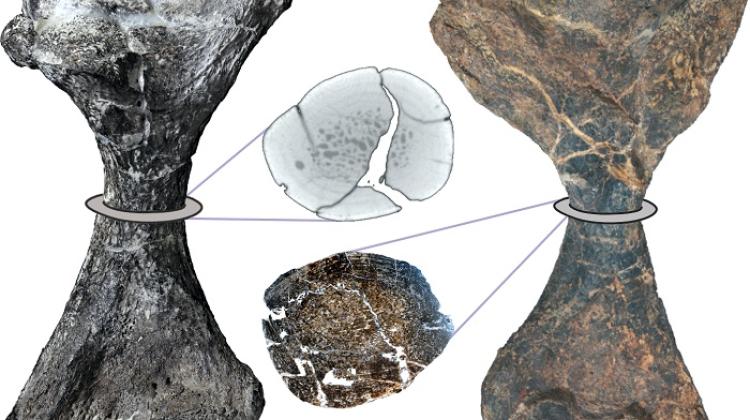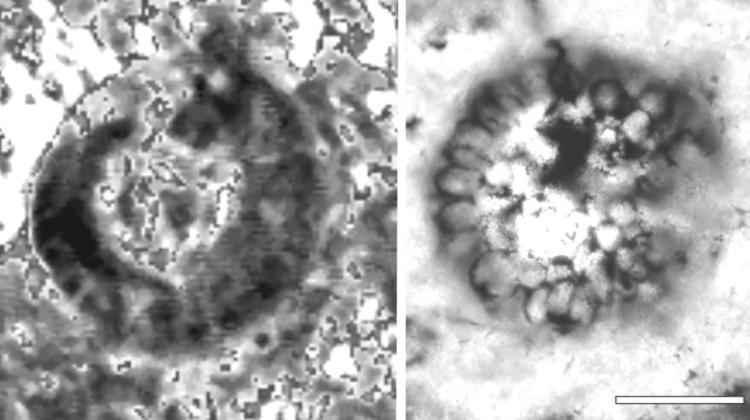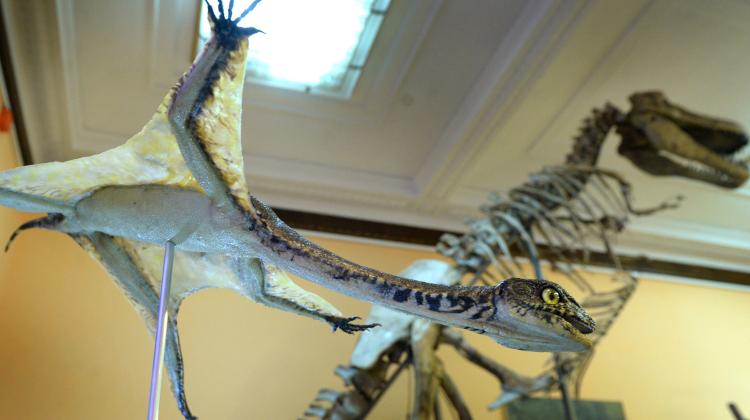One of the oldest species of tortoise... found near Silesian landfill
Fossils of an unknown species of primeval tortoise from approx. 215 million years ago have been described by Polish palaeontologists. Researchers stumbled them by accident ... near garbage dump in Poręba. The species was named after the Silesian city.
During the Triassic period, before dinosaurs dominated the Earth, other reptiles walked the world: tortoises. And they were quite similar to those we know in the present. In addition, they inhabited the territory of present day Poland. We know this thanks to the research of scientists from the Institute of Paleobiology PAS.
Previously unknown species of tortoise from 215-220 million years ago has been described by Tomasz Szczygielski and Dr. Tomasz Sulej from the Institute of Paleobiology PAS. Researchers found and catalogued specimens of fossilized remains of 200 tortoises - including four complete shells. "In honour of Poręba we named the species Proterochersis porebensis, which translates as >>primeval tortoise of Poręba<<" - explained Tomasz Szczygielski, a doctoral student at the Institute of Paleobiology PAS. Research was published in late May in the "Zoological Journal of the Linnean Society".
Szczygielski explained that tortoises were not unusual at that time - fossils of their possible ancestors have been found in Africa, and more advanced species also in today\'s China, Germany, Argentina, USA, Thailand or Greenland. "Climate in the area of today\'s Poland in the Triassic resembled that in today\'s India. So there was no reason to believe that tortoises had not lived here in those days" - said Szczygielski. But such old remains of tortoises were found only a few years ago.
Fossils found by the Poles turned out to be unique on a global scale. "In our publication we prove that Proterochersis is the oldest and most primeval genus of tortoises with fully formed shell" - noted the palaeobiologist. He admitted that fossils from earlier periods were tortoises, whose shells did not look like the shells of today\'s tortoises. For example, the Triassic primeval tortoise found in China had shell only on its belly, and another Triassic tortoise species from Germany did not have a shell at all.
"The primeval tortoise of Poręba" was a land tortoise, a bit similar to modern Hermann\'s tortoise, but much bigger - its shell reached 50 cm in length, and the whole animal measured the up to 1 m. Szczygielski explained that the head and tail in this species were so big that they could not be retracted into the shell. The ability to retract into the shell appeared in tortoises later, in the course of evolution.
"In the place where we conducted excavations, there had to be a wild river sometime in the Triassic. It seems that the bodies of tortoises washed away by the waves or those that fell into the river by accident, stopped in a place that we studied" - says Tomasz Szczygielski.
The discovery was quite accidental. Fossils of tortoises were found by Tomasz Sulej - after he learned of the grey clays dug in connection with preparing land for a garbage dump near Poręba. "In September of 2008 I drove through Poręba near Zawiercie - Dr. Tomasz Sulej told PAP a few years ago. - I could not resist the urge to drive to the nearby garbage dump. Yes, I know this may sound strange. The dump was fenced and guarded, and already reclaimed, overgrown with grass, and all around were fields, thickets and woods. I went on a reconnaissance and quickly found a large space covered in grey mud ." After half an hour later he found a tooth of a dinosaur and a piece of tortoise shell.
Garbage is buried in a large pit and then covered with a tight layer of clay. "Due to the fact that the surface of the soil was removed, the Triassic layers were exposed, as in this area these layers are located near the surface" - commented Szczygielski.
According to the doctoral student, palaeontologists are interested in any earthworks in Zawiercie. "Whenever archaeologists find something interesting, they have the right to stop the investment in a given place until they finish their studies. And we palaeontologists can only politely ask to be let in on the site. We can not do anything without the permission of the land owners" - sighed the scientist.
Map - the place of discovery of fossils of Triassic tortoises.
Szczygielski appeals to people who suspect that they have found prehistoric fossils to contact the Institute of Paleobiology PAS, or the Museum of Evolution PAS. "We will know how to mark such finds" - said Szczygielski. He stressed that such information may help to make a breakthrough discovery.
PAP - Science and Scholarship in Poland, Ludwika Tomala
lt/ mrt/
tr. RL
Przed dodaniem komentarza prosimy o zapoznanie z Regulaminem forum serwisu Nauka w Polsce.


















